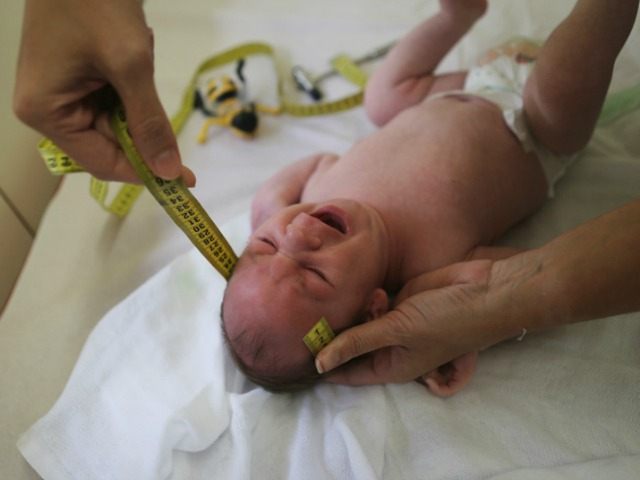Virologist Gubio Soares, who first identified the presence of the pervasive Zika virus in Brazil, suggested that legalized abortion in French Polynesia may have prevented scientists from uncovering a link between Zika and severe infant deformities sooner.
During a lecture, Soares claimed scientists do not know for sure if a link exists between Zika and microcephaly. This is mainly because women in places where Zika breeds often aborted children who showed signs of microcephaly, a disorder now linked to the virus. Microcephaly occurs if the brain does not form properly in pregnancy or stops growing after birth. Children can suffer from seizures, developmental delays, intellectual disability, and feeding problems.
“It is necessary to review the number of abortions in French Polynesia,” he stressed.
Experts are working to understand what has now become a clear link between Zika and microcephaly, which causes small skulls in infants that cannot hold the brain. This leads to serious mental disabilities.
Planned Parenthood and leftist politicians have argued that easier access to abortion will help contain the damage the Zika virus is causing in Latin America.
“It is essential to recognize that women and men have the right to make decisions and existential options and one of the most important choices in the life of a woman is to have children or not,” wrote sociologist Jacqueline Pitanguy in the O Globo.
One Brazilian judge announced he will grant Zika-infected women abortions if they can prove their unborn child has microcephaly. He insisted these abortions are “valid” if reports prove the child will “be born dead” or “life after birth is impossible.” He will require at least three separate medical records to reach his decision.
The CDC stated the disorder is typically uncommon. Following the outbreak of Zika, however, Brazil has discovered over 4,000 cases and is diagnosing an average of 200 cases a week. In 2015, the country tracked over 2,400 cases compared to the 147 in 2014.
Brazil, El Salvador, and Colombia have advised women not to get pregnant.
“It’s a very personal decision, but at this moment of uncertainty, if families can put off their pregnancy plans, that’s what we’re recommending,” stated Angela Rocha, the pediatric infectologist at Oswaldo Cruz Hospital in Brazil.
Giselle Carino, deputy director for the International Planned Parenthood Federation’s (IPPF) Western Hemisphere Region, called the move “insufficient at best” and “needs to be more comprehensive.”
Doctors cannot diagnose microcephaly until the third trimester or after birth:
In many cases, microcephaly may not be evident by ultrasound until the third trimester and, therefore, may not be seen on ultrasounds performed earlier in pregnancy. The diagnosis of microcephaly may be made at birth or later in infancy. The baby’s head circumference is much smaller than normal. During the physical exam, the doctor obtains a complete prenatal and birth history of the child. In older babies and children, the doctor may also ask if there is a family history of microcephaly or other medical problems. Sometimes the child is born with a normal head circumference but then acquires microcephaly because of a serious condition, such as certain genetic disorders, stroke, traumatic injury, or poisoning. The doctor will also ask about developmental milestones since microcephaly can be associated with other problems, such as intellectual disability. Developmental delays may require further medical follow-up for underlying problems.
The National Institutes of Health confirmed that the Zika virus outbreak has reached pandemic levels in Latin America.
“You have multiple countries in South America and in the Caribbean, so by anybody’s definition that would be considered a pandemic,” explained Dr. Anthony Fauci, head of the infectious diseases branch at the institute.
His comments come after experts and the World Health Organization (WHO) warned the disease had “explosive pandemic potential.” Marcos Espinal, head of Communicable Diseases and Health Analysis for the WHO’s regional satellite, the Pan American Health Organization, predicted the world could see “3 to 4 million cases of Zika virus disease.”
Doctors in the U.S. have confirmed at least 31 Zika cases.
“If you have this much Zika in South America and the Caribbean, sooner or later we’re going to see a local transmission,” continued Fauci. “Most of the United States goes through a real winter and that’s very, very important in containing mosquito-borne viruses.”

COMMENTS
Please let us know if you're having issues with commenting.